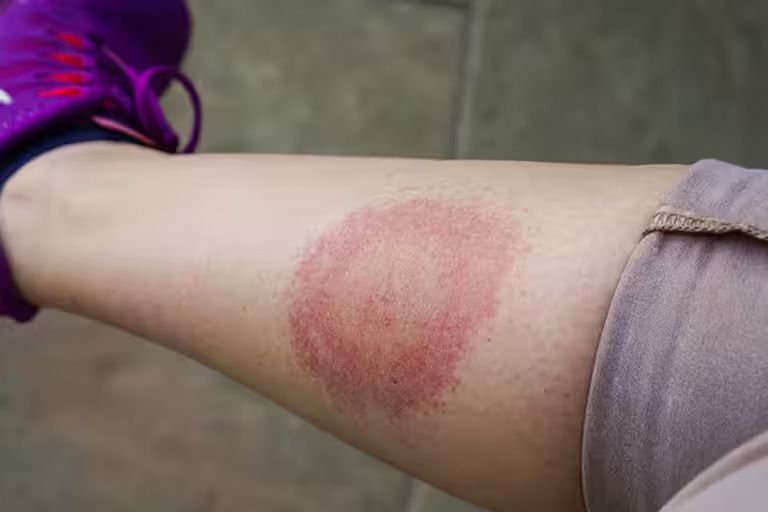Health officials have issued a warning to the public to be wary of tick bites this summer, as fresh numbers reveal over 1,500 confirmed cases of Lyme disease in England in 2024.
The UK Health Security Agency (UKHSA) confirmed 1,581 laboratory-reported cases last year, a tiny decrease from 2023, but warned that the actual incidence is likely higher due to under diagnosis.
Infections were documented in all regions, with the South West, South East, and London accounting for the vast majority.
All of this was documented in a release dated July 31, 2025, which our journalist received from the UK government website on Friday.
The summer months increase the risk of tick exposure, especially in grassy or wooded areas where ticks thrive.
While not all ticks carry the bacteria that causes Lyme disease, health experts recommend taking precautions to avoid infection.
“It’s really important that people continue to be tick aware this summer to protect themselves against Lyme disease.
“The disease is usually acquired when spending time outdoors in green spaces, which people do more of in the summer months.
“After spending time in nature, people should take precautions such as checking for ticks and promptly and safely removing them, which will reduce chances of infection,” said Christina Petridou, Consultant Microbiologist at UKHSA.
Lyme disease is a bacterial infection transmitted by ticks that have fed on infected animals like deer.
To transfer the bacterium, a tick must usually remain attached for several hours, which is why early detection is crucial.
Common symptoms include:
· A spreading, bullseye-shaped rash
· Fever, headache, and fatigue
· Nerve pain, numbness, or a facial droop
The rash may develop between 3 and 30 days after a bite, but not all infected individuals will display it.
To reduce the risk of Lyme disease, UKHSA recommends the following:
· Stick to footpaths and avoid brushing against tall grass or dense vegetation.
· Wear long sleeves and trousers to reduce skin exposure.
· Use insect repellents that contain DEET.
· After outdoor activity, check yourself, your clothing, pets, and children for ticks.
“While not all ticks carry the bacteria that cause Lyme disease and not all bites will result in human infection, it’s still important to check for ticks when you return from outdoor activities,” said Petridou.
Ticks are small, and their bites rarely cause discomfort, so many individuals may not notice they have been bitten.
Regular body inspections after outdoor activities can help identify them before they become embedded.
If you find an attached tick, it is recommended that;
· Remove it immediately with a tick removal tool or fine-tipped tweezers.
· Avoid squashing the tick during removal.
· Monitor for symptoms over the next few weeks
“If you notice any symptoms like a spreading circular rash, flu-like symptoms, nerve pain, or a droop on one or both sides of the face within a few weeks of being bitten by a tick, contact your GP or dial NHS 111,” Petridou advised.
Lyme disease can be successfully treated with medicines if detected early. Delays in therapy can result in more significant consequences affecting the neurological system and joints.
“To reduce your risk of tick bites while walking in green spaces, stick to clearly defined paths and try to avoid brushing against vegetation where ticks might be present.
“Also consider wearing clothing that covers your skin to make it more difficult for ticks to access a suitable place to bite,” Petridou said.










